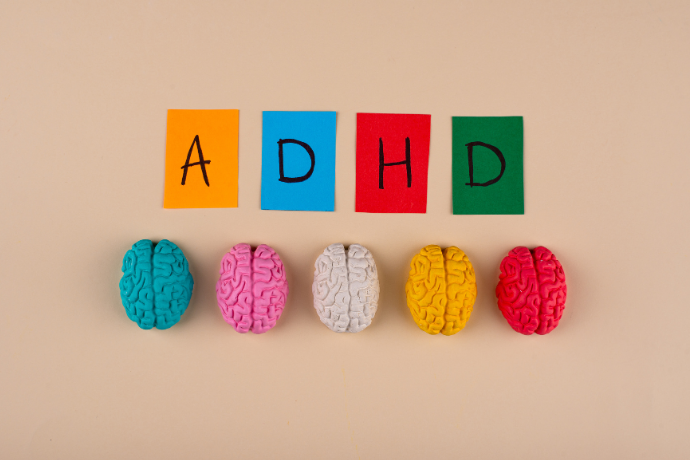 SPEAKERS
SPEAKERS
 TOPICS
TOPICS
Living with ADHD requires understanding your strengths and working with your brain’s natural tendencies. By embracing personalized strategies, you can turn challenges into opportunities for success.

Living with ADHD can present unique challenges when it comes to staying focused and maintaining productivity. However, understanding how to harness your strengths and work with your brain's natural tendencies can make a significant difference in your daily life and professional success. By embracing your unique cognitive style and developing personalized strategies, you can transform potential obstacles into stepping stones for achievement.
What's crucial is understanding that productivity isn't about forcing yourself into traditional methods that might not suit your needs. Instead, it's about discovering and implementing strategies that work specifically for your unique way of processing information and managing tasks.
Many people wonder, "Does ADHD affect motivation?" The answer is yes, but not in the way most people think. The ADHD brain processes rewards and motivation differently, making it crucial to develop strategies that work with these unique characteristics rather than against them.
When we explore "lack of motivation and ADHD," it's important to understand that it's not about being lazy or unmotivated. Instead, it's about how our brain's executive functioning system operates differently from others.
Understanding the science behind motivation and ADHD reveals that our dopamine systems function differently. This neurotransmitter, responsible for feelings of reward and pleasure, operates uniquely in the ADHD brain, affecting how we perceive and pursue goals.
Research shows that individuals with ADHD often experience what's called "interest-based nervous system." This means that motivation for ADHD adults is more readily available when tasks align with their interests or provide immediate engagement.

Understanding the environmental factors below is crucial for motivation for ADHD adults:
Neurodiversity speakers often emphasize the importance of creating a workspace that aligns with one's unique processing style. Strategic furniture placement can help create an environment that supports focus and productivity. For example, to minimize external distractions, position your desk to face a wall rather than a window, and consider using noise-canceling headphones to control auditory input.
Lighting also plays a significant role in maintaining attention. Natural light is ideal, but if that's not possible, invest in adjustable lighting that mimics daylight. This can help regulate your circadian rhythm and maintain energy levels throughout the day.
Organization systems should be simple and visible. Use clear containers, label everything, and implement a daily reset routine to maintain order. Consider using vertical space with wall organizers or pegboards to keep frequently used items visible yet uncluttered.
Learning how to stay motivated with ADHD often starts with mastering time management. The key is to break tasks into smaller, manageable chunks and use timer-based work sessions to maintain focus and energy.
Psychology speakers recommend utilizing the body's natural energy cycles. Plan your most challenging tasks during your peak energy hours, and schedule breaks when you typically experience energy dips.
One effective method is the Pomodoro Technique, which involves working for 25 minutes followed by a 5-minute break. This structured approach helps maintain focus while preventing mental fatigue and overwhelm.
Time blocking is another powerful strategy where you dedicate specific time slots to particular tasks. This method helps create clear boundaries and reduces the mental load of constantly deciding what to do next.
Discovering how to get motivation with ADHD involves creating systems that work for your unique brain wiring. Start with small, achievable habits and gradually build upon them as they become second nature.
When establishing routines, consistency is key. Start by identifying your most productive hours and design your schedule around these peak performance times. This approach helps maintain natural momentum and reduces the need for excessive self-motivation.
Building habits requires patience and persistence. Consider using the "two-minute rule" - if a task takes less than two minutes, do it immediately. This prevents task accumulation and builds confidence through quick wins.
Creating accountability systems can significantly enhance routine adherence. Share your goals with a friend, family member, or mentor who can regularly check in on your progress. This external support structure helps maintain momentum when internal motivation fluctuates.
Remember to incorporate flexibility into your routines. While structure is important, rigid schedules can lead to frustration. Allow room for adjustments while maintaining core habits that support your productivity and well-being.

Modern technology offers numerous solutions to support productivity and organization. From task management apps to smart reminders, these tools can help maintain focus and provide the external structure that ADHD minds often need.
Digital calendars with customizable notifications can help you stay on track throughout the day. Time-blocking apps allow you to visualize your schedule and maintain better control over your daily activities. Project management tools can break down complex tasks into manageable steps.
Focus apps that block distracting websites and social media platforms during work hours can significantly improve productivity. Time-tracking tools provide insights into how you spend your time, helping you identify patterns and adjust your schedule accordingly.
Remember that finding the right combination of strategies and tools might take time. Be patient with yourself and celebrate small victories as you develop your personal productivity system.
Physical activity and mindfulness practices can significantly impact your ability to focus and maintain motivation. Regular exercise, adequate sleep, and proper nutrition form the foundation of sustainable productivity for individuals with ADHD.
When combined with these strategies, understanding motivation and ADHD becomes less about forcing yourself to focus and more about creating an environment and lifestyle that naturally supports your success.
Engaging in mindful movement practices like yoga or tai chi can help calm an overactive mind and improve concentration. These activities create a natural bridge between physical awareness and mental focus, making it easier to maintain attention throughout the day.
Implementing a consistent sleep schedule helps regulate your body's natural rhythms, which is crucial for managing ADHD symptoms. Aim for 7-9 hours of quality sleep and establish a calming bedtime routine to support better rest.
Boosting productivity with ADHD isn’t about forcing traditional methods but rather embracing strategies that align with your unique cognitive style. By creating an ADHD-friendly environment, mastering time management, leveraging technology, and maintaining a strong mind-body connection, you can transform challenges into strengths.
Small, consistent adjustments—such as structured routines, external accountability, and mindful habits—can make a significant impact on focus and efficiency. Remember, productivity is a journey, not a destination, and finding what works best for you is key to long-term success.